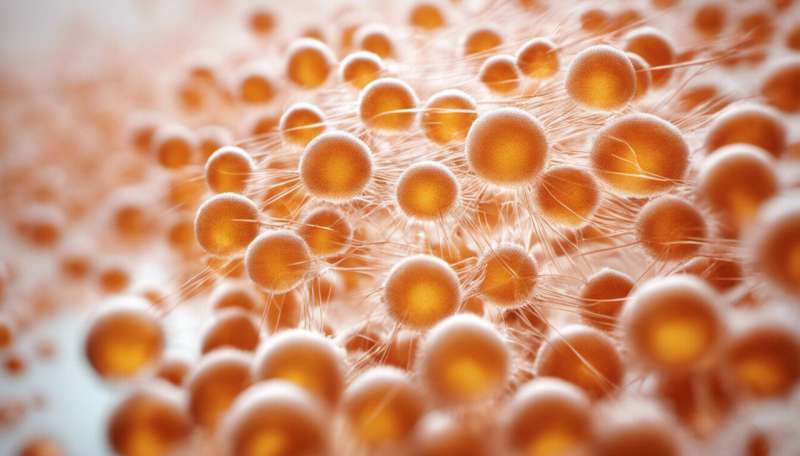Study shows how immune cells rally defenses against infection while keeping harmful inflammatory reactions in check

T cells represent a significant component of the ‘muscle’ in the immune system, promoting aggressive action against perceived threats or restraining fellow immune cells from launching an unhealthy autoimmune response (Fig. 1). Dendritic cells (DCs) help to manage these cells, presenting bits of antigen to T cells in a context that allows them to react appropriately.
As with everything in the immune system, however, the biological details are considerably more complex. “DCs consist of heterogeneous subsets, including conventional DCs (cDCs) and plasmacytoid DCs (pDCs),” explains Katsuaki Sato of the RIKEN Research Center for Allergy and Immunology in Yokohama, “and the precise functional role of each DC subset in immune responses remains unclear.” Sato is especially interested in pDCs, as the experimental data obtained to date have done little to clarify their behavior within the body.
Sato and his colleagues from Japan and France recently published a detailed analysis of pDC function, achieved by selectively obliterating this cell population in mice1. To do this, the team inserted a toxin gene into the gene encoding Siglec-H, a protein uniquely expressed by pDCs; by chemically activating this fatal factor, the researchers could rapidly eliminate Siglec-H-producing cells. As an added benefit, this insertion effectively knocked out Siglec-H expression, revealing the functional contributions of this protein in otherwise normal pDCs.
pDCs express a protein called toll-like receptor 9 (TLR9), which responds particularly to the presence of pathogens such as viruses and bacteria. The researchers determined that pDCs generate various inflammatory signals in response to TLR9 activation, but that the levels of these signals are normally modulated by the inhibitory action of Siglec-H, which appears to be a key regulatory molecule in these cells.
Their experiments confirmed a central role for pDCs in responding to infection, driving both the inflammatory response pathway as well as the production of pathogen-destroying cytotoxic T lymphocytes. However, pDCs also appear to make an important contribution to the process of ‘peripheral tolerance’, which holds the immune system in check and prevents it from overreacting to non-threatening antigens. Specifically, pDC signals inhibited the production of antigen-specific helper T cells, which activate other immune cells, and favored the formation of regulatory T cells, which help to restrain the immune response.
These latter findings were somewhat surprising, and Sato hopes to delve further into their implications for human health in future studies. “We have a plan to analyze the role of pDCs and their regulation in the control of autoimmune disease,” he says.
More information: Takagi, H., Fukaya, T., Eizumi, K., Sato, Y., Sato, K., Shibazaki, A., Otsuka, H., Hijikata, A., Watanabe, T., Ohara, O. et al. Plasmacytoid dendritic cells are crucial for the initiation of inflammation and T cell immunity in vivo. Immunity 35, 958–971 (2011). www.cell.com/immunity/abstract/S1074-7613%2811%2900502-4














